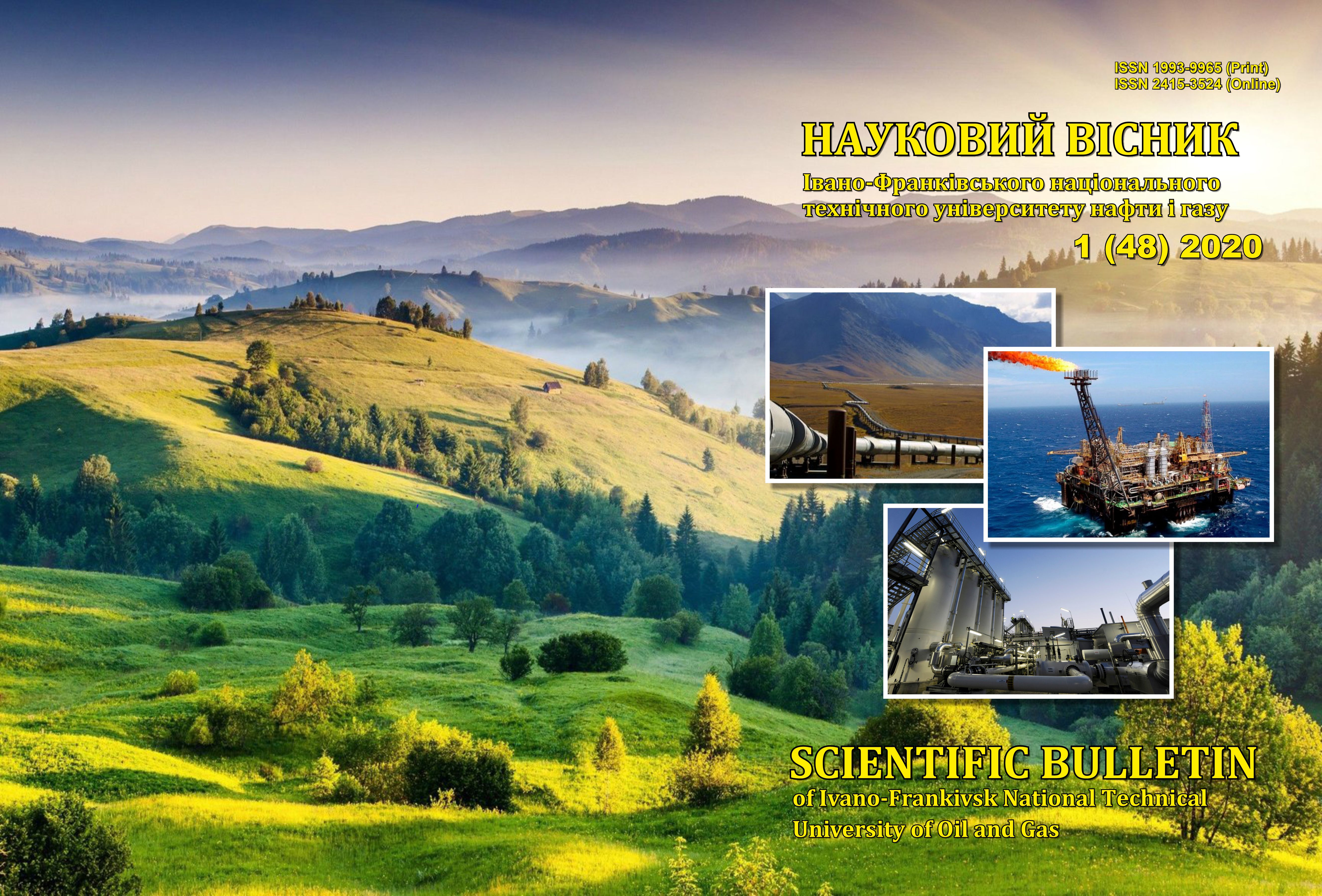Development of the structural model of the life cycle of a part by means of the technological inheritance mechanics
DOI:
https://doi.org/10.31471/1993-9965-2020-1(48)-23-37Keywords:
technological process; surface layer; operating characteristics; continuum damage mechanics; in-heritance.Abstract
The priority of the quality improving of machine parts, providing their operational characteristics and specified reliability parameters during the design of oil and gas and mechenical engineering equipment was established. The dominance of the criterion of technological inheritability for all stages of the Life Cycle of a Part was noted. The current state of providing of the quality parameters of a part and its operational characteristics by means of the technological inheritabilty was analyzed. Algorithms for technological providing of quality parameters, operational characteristics and reliability indicators of parts are considered. Approaches for estimation of the degree of material degradation, worked-out and anticipated (residual) part lifetime were described. Object, subject and research tasks were installed. The deformation and energy criteria for evaluation of degree of material damageability are presented. The specificity of SADT-technology for the analysis and synthesis of the technological processes is described and the advantages, disadvantages, scope of its application are noted. A systematic approach for the joint using of continuum media mechanics, continuous damage mechanics and fracture mechanics is proposed. During the study of the process of metal plastic molding in a certain focus of deformation the properties of the surface layer are considered as a the result of this molding. And the process of part exploitation are considered as the continuing the change of these properties. That approach allows to use the parameters of the deformation mechanics as the degree of shear deformation and the degree of exhaustion of the plasticity reserve for the analysis of physical phenomena. The Life Cycle of a Part is analyzed as an integrated process of exhaustion of the metal plasticity stock under the influence of the specified load programs in according to the technological inheritability of its properties. An advanced structural model of the Life Cycle of a Part by means of the technological inheritability mechanics is offered.
Downloads
References
Dalskij A.M., Bazrov B.M., Vasilev A.S. i dr. Tehnologicheskaya nasledstvennost v mashinostroitelnom proizvodstve [Technologi-cal inheritance in mechanical engineering industry]. MAI, Moscow, 2000, 364 p. [in Russian]. URL: https://www.twirpx.com/file/1325967/
Kheifetz, ML, Vasilyev, AS & Klimenko, SA. 2019, Technological Control of the Heredity of Operational Quality Parameters for Machine Parts. Advanced Materials and Technologies, no 2, Р. 8–18. doi: 10.17277/amt.2019.02.pp.008-018. http://journal.tstu.ru/images/2-2019/02_Kheifetz,%20Vasilyev,%20Klimenko.pdf
Kusyi, YaM & Kuk, AM 2020, Investigation of the technological damageability of castings at the stage of design and technological preparation of the machine Life Cycle. Journal of Physics: Conference Series,volume 1426. doi: 10.1088/1742-6596/1426/1/012034. URL: https://iopscience.iop.org/article/10.1088/1742-6596/1426/1/012034/pdf
Kusyi Ya, Kuk A & Kostiuk O 2019, Use of vibration technologies for ensuring quality parameters of products surfaces. SIMTERM 2019: materials of 19th International Conference on Thermal Science and Engineering of Serbia, pp. 794-800. URL: http://simterm.masfak.ni.ac.rs/index.php/en/
Blumenstein, V, Rakhimyanov, K, Heifetz, M & Kleptzov, A. Problem of technological inheritance in machine engineering. AIP Conference Proceedings, 2016, no 1698 (1), P. 2-7. doi: 10.1063/1.4937831. URL: https://aip.scitation.org/doi/pdf/10.1063/1.4937831
Blumenstein, V, Mahalov, V & Shirokolobova F 2017, Finite Element Modeling of Strengthening Process by Means of Surface Plastic Deformation Using a Multiradius Tool. IOP Conf. Series: Materials Science and Engineering, no 253, P. 1-12. doi: 10.1088/1757-899X/253/1/012017. URL: https://iopscience.iop.org/article/10.1088/1757-899X/253/1/012017/pdf
Kazakov, DA, Kapustin, SA & Korotkih, YuG 1999, Modelirovanie processvo deformirovaniya i razrusheniya materialov i konstrukcij [Modeling of the processes of materials and structures deformation and fracture]. Izd.-vo Nizhegorodskogo gosudarstvennogo universiteta, N. Novgorod, 226 p. [in Russian] URL: https://www.twirpx.com/file/663804/
Volkov, YuG. & Korotkih, YuG 2008, Uravneniya vyazkouprugo–plasticheskih sred s povrezhdeniyami [Equations of viscoelastic – plastic continuum with damages]. FIZMATLIT, Moscow, 424 p. [in Russian] URL: https://www.twirpx.com/file/2524622/
Bogatov, AA, Mizhirickij, OI & Smirnov SV 1984, Resurs plastichnosti metallov pri obrabotke davleniem [Resource of metals plasticity by pressure processing]. Metallurgiya, Moscow, 144 p. [in Russian] URL: https://www.twirpx.com/file/1028260/
Marka, D & MakGouen, K 1993, Metodologiya strukturnogo analiza i proektirovaniya [Structural Analysis and Design Methodology]. Meta Tehnologiya, Moscow, 240 p. [in Russian]
Illushko, V, Abdul-Retha, E, Sokolov, A, Zaretskaya, I, Dierks, S & Marqués P 2016, Modern Integrated Technology of Information Systems Design and Development: From Programming to Project Management . Marques Aviation, United Kingdom, 443 p.
Hejfec, ML and Chemisov, BP (ed.) 2002, Intellektualnoe proizvodstvo: sostoyanie i perspektivy razvitiya [Intellectual production: state and development prospects] / Pod obsh. red. . PGU, Novopolock, 268 p. [in Russian]
Denkena, B, Mörke, T, Krüger, M, Schmidt, J, Boujnah, H, Meyer, J, Gottwald, P, Spitschan B & Winkens, M 2014, Development and first Applications of Gentelligent Components over their Life-Cycle. CIRP Journal of Manufacturing Science and Technology. 2013. volume 7(2). P. 139-150. doi: 10.1016/j.cirpj.2013.12.006
Kolmogorov, VL 1970, Napryazheniya, deformacii, razrusheniya [Stresses, deformations, fractures]. Metallurgiya, Moscow, 229 p. [in Russian]. URL: https://www.twirpx.com/file/103478/
Murakami, Sumio 2012, Continuum Damage Mechanics – A Continuum Mechanics Approach to the Analysis of Damage and Fracture. Springer: Dordrecht, Heidelberg, London, New York, 402 p. doi: 10.1007/978-94-007-2666-6
Algin, VB 2010, Tehnologicheskie i ekspluatacionnye metody obespecheniya kachestva mashin [Technological and operational methods for providing the machines quality] / V. B. Algin [and others]; P. A. Vityaz (red). Belarus. navuka, Minsk, 109 p. [in Russian]
Dalskij, AM 1975, Tehnologicheskoe obespechenie nadezhnosti vysokotochnyh detalej mashin [Technological provid-ing of the highprecision machine parts reliability]. Mashinostroenie, Moscow, 223 p. [in Russian] URL: https://www.twirpx.com/file/668865/
Downloads
Published
How to Cite
Issue
Section
License
Авторські права....


1.png)

















